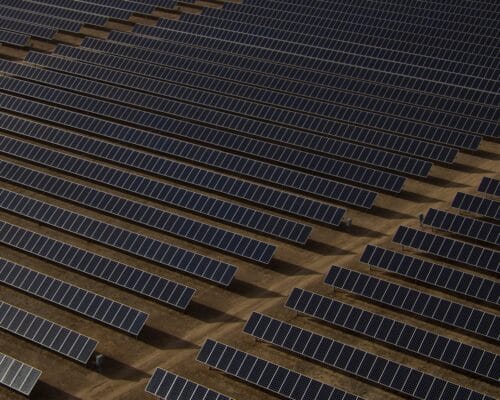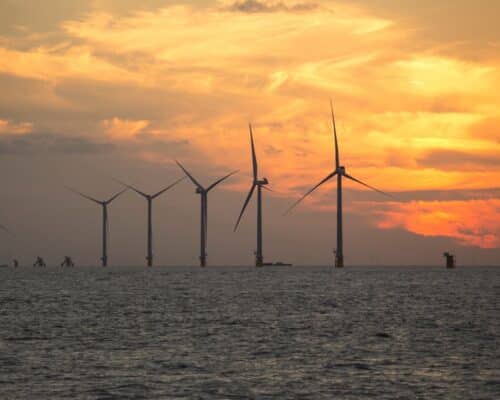The Impacts Of the Electricity Price Increase On Asian Countries
Sumit Saraswat / Shutterstock.com
30 January 2023 – by Viktor Tachev
The electricity price increase across Asian countries is a painful reminder of the consequences of their energy policies. On top of the rising gas and electricity prices, the overreliance on fossil fuel imports has also exacerbated the energy poverty problem and worsened the global energy crisis by forcing countries to deal with power blackouts. Furthermore, the trend of rising energy prices will likely continue in 2023, affecting other countries. Even developed nations like South Korea plan to share the burden with consumers by raising electricity rates.
The Electricity Price Increase In Asia Is Gathering Speed
At the start of the energy crisis in 2022, some national power utilities were quick to raise their power rates and pass the burden on to consumers. However, this trend has continued into 2023 as well, with some countries considering a consecutive power rate increase.
The main reason for the increasing energy bills is that most Asian countries are net energy importers. This has left them at the mercy of suppliers, who weren’t shy to break contracts, pay compensation and reroute deliveries to other parties to take advantage of the higher prices caused by the Russia-Ukraine war and the increased power demand.
More importantly, the energy crisis is affecting both developing and developed nations, wreaking havoc across Asia.
South Korea
The country’s state-run utility, KEPCO, plans to raise its electricity rates substantially in 2023.
As a reason, KEPCO cites the looming record losses it faces due to the increased fuel costs. The country imports coal, oil and gas to satisfy almost all of its consumption.
While the hike is incomparable to Europe’s, it is unprecedented for South Korea. The increase in the year’s first three months will be KRW 13.1/KWh, a 9.5% increase.
According to officials, electricity and fuel price increases will likely continue to increase beyond the first quarter of 2023.
The Philippines
Filipinos have a history of paying some of Southeast Asia’s highest electricity rates. The Philippines has between 25% and 87.5% higher electricity rates than some of its ASEAN neighbours. Across Asia, only Japan and Singapore provide more expensive electricity to their populations.
And 2022 was no different. While in May, the local regulator denied the joint petition from San Miguel Corp. and Manila Electric Co. for a temporary electricity price increase to protect consumers, towards the end of the year, electricity price hikes proved inevitable.
As a result, January 2023 will mark the third consecutive month of electricity price increases.
Bangladesh
Bangladesh was one of the countries hit the hardest by the energy crisis. In 2022, it was repeatedly priced out of fossil fuel markets. The country started considering proposals for electricity rate hikes of between 58% and 66%.
While they were rejected, in December 2022, Bangladesh’s bulk electricity prices increased by 19.92%. At the start of 2023, the Bangladesh Energy Regulatory Commission recommended raising consumer-level power prices by 15.43%.
The Energy Prices Increase Impact on Affected Countries
During the global energy crisis, Asian countries’ overreliance on fossil fuel imports has made them highly vulnerable.
The rising power costs have fueled inflation across Asia, substantially increasing the CPI. As a result, the costs have impeded economic growth and exacerbated the problem of energy poverty, further threatening livelihoods. The IEA sees a real risk that the high energy prices will push nearly 90 million people in Asia and Africa towards energy poverty, as they won’t be able to afford to pay for their basic energy needs.
Population and businesses in many countries have been dealing with regular and extended power blackouts.
Countries on the brink of default had to borrow funds from neighbours and financing institutions to bear the high fossil fuel costs.
The high power rates disproportionately burden low-income households, hitting the poorest the hardest and even affecting developed nations.
A Grim Outlook For 2023
The US Energy Information Administration and various research agencies see global oil prices remaining high in 2023. Goldman Sachs forecasts gas prices to stay twice as high as normal until 2025.
According to the IMF, there will be a notable slowdown in economic growth across Asia in 2023 compared to the past 20 years.
Leaders from countries like India and the Philippines have already expressed concerns that the energy crisis will remain severe in 2023.
The ADB warned that electricity bills might rise by 27% by 2025 if the region’s energy supply mix remains unchanged.
Looking Towards the Alternatives
Shifting from fossil fuel-dominated energy systems to ones in which renewable energy sources play the leading role will help countries avoid future energy crises – an argument that was also raised back in 1981.
Climate Analytics’ research shows that renewable energy supports energy security, improves energy access and makes electricity more affordable.
Bloomberg NEF states that renewables are the cheapest source of new bulk power in countries comprising 90% of electricity generation and two-thirds of the global population. Furthermore, while fossil fuels maintain high prices, scientists note that clean energy costs will continue to decline with the addition of new capacity.
On top of that, the clean energy transition will ensure additional economic benefits, including job creation, less volatile power prices and indirect gains from averted losses due to the climate crisis.
Last but not least, it will guarantee power supply stability and help countries build more resilient and self-sustaining energy systems.
by Viktor Tachev
Viktor has years of experience in financial markets and energy finance, working as a marketing consultant and content creator for leading institutions, NGOs, and tech startups. He is a regular contributor to knowledge hubs and magazines, tackling the latest trends in sustainability and green energy.
Read more



